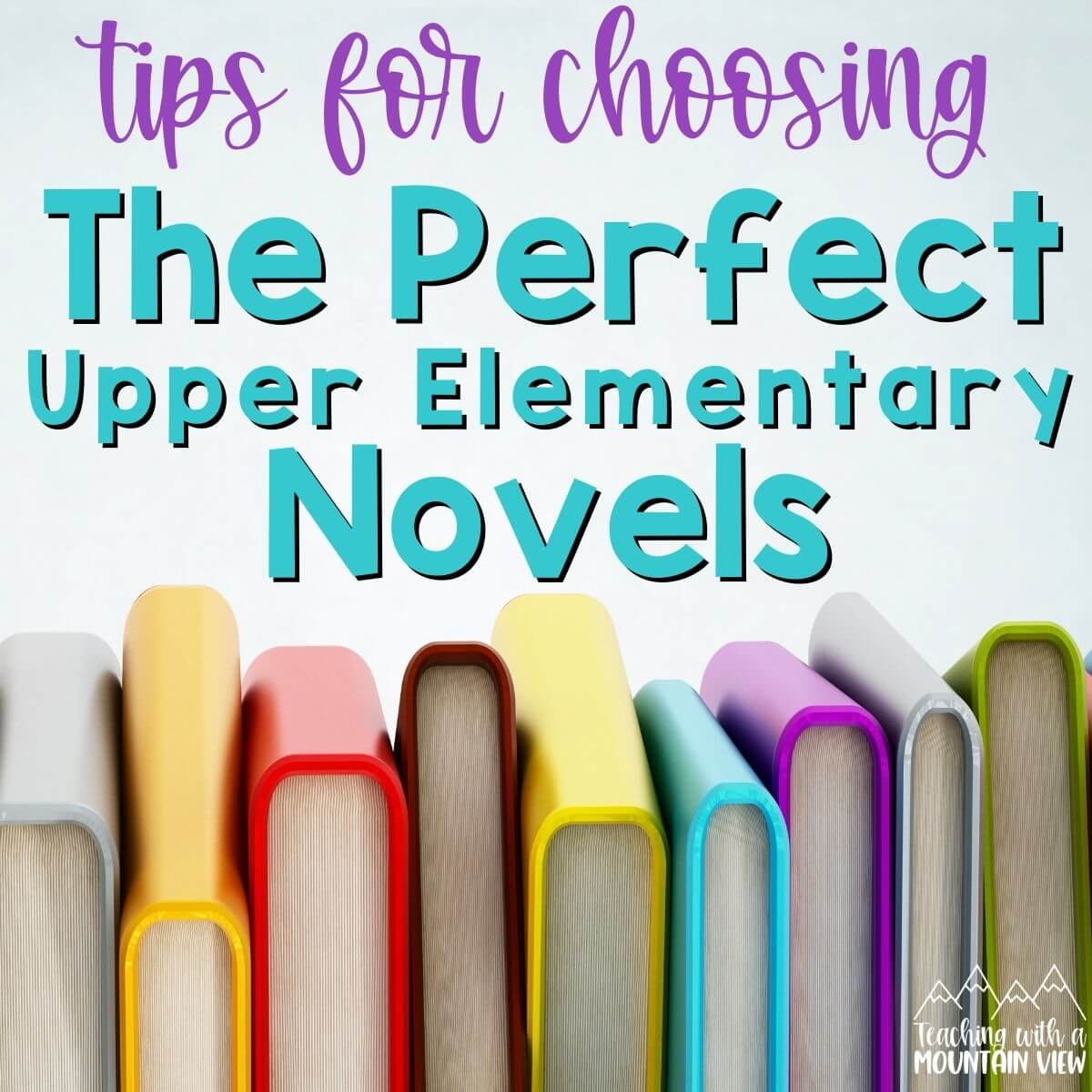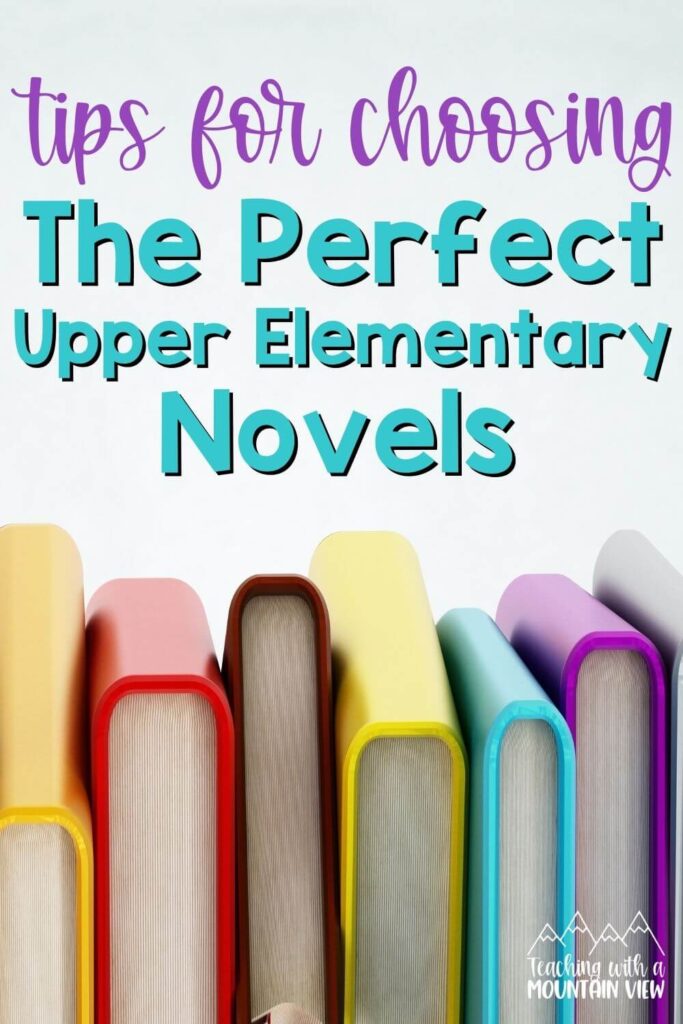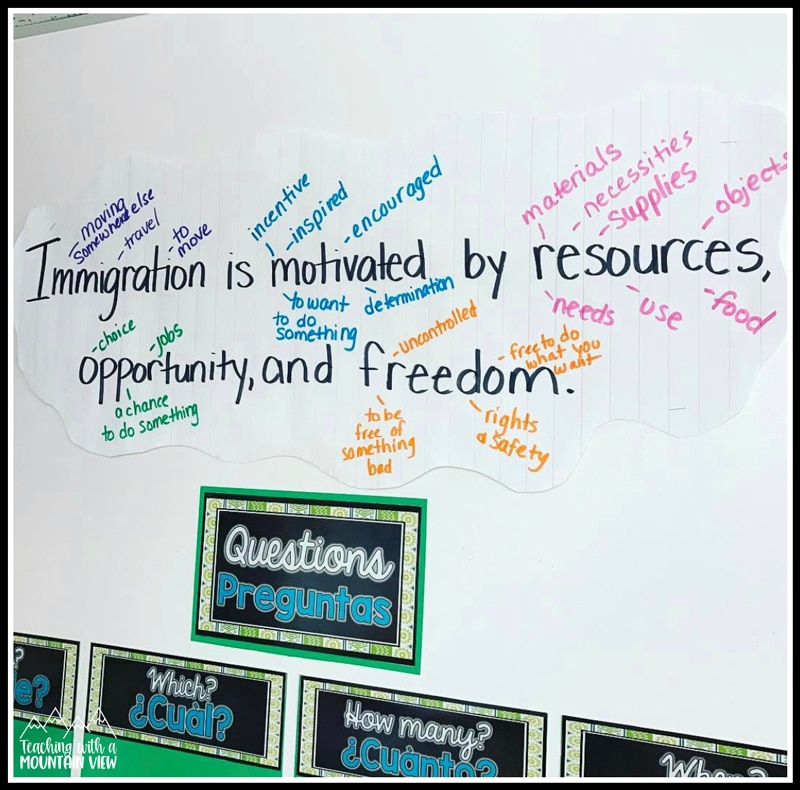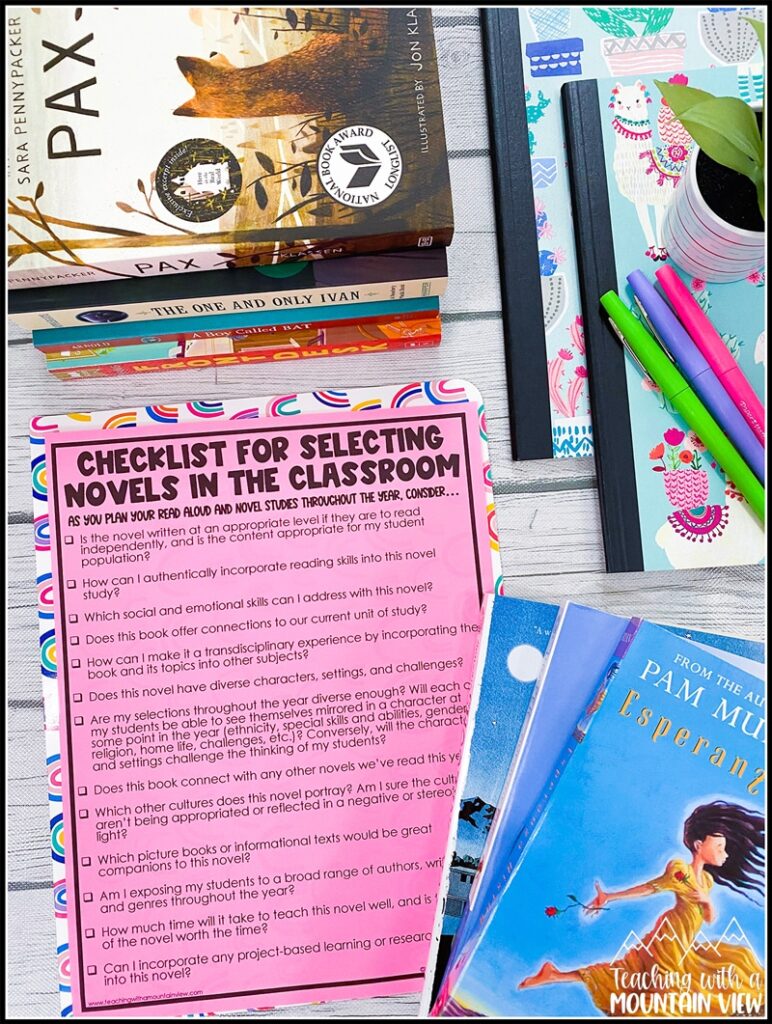Thoughtful Tips for How To Select Novels in Upper Elementary
By Mary Montero
Share This Post:

I love reading chapter books with my class and digging deep into comprehension through novel study. Teachers often ask me for book suggestions, so I wrote this recent post with my favorite upper elementary books. I wanted to take that a step further by sharing my best tips for how to select novels in upper elementary.

Questions to Ask When It’s Time To Select Novels in Upper Elementary
There are so many amazing classics as well as an ever-evolving list of new books that come highly recommended. When I am looking for books to bring into my classroom, I encourage teachers to consider the following:
- Is the novel written at an appropriate level if they are to read independently, and is the content appropriate for my student population?
- How can I authentically incorporate reading skills into this novel study?
- Which social and emotional skills can I address with this novel?
- Does this book offer connections to our current unit of study? This was particularly important when teaching in an IB school.
- How can I make it a transdisciplinary experience by incorporating the book and its topics into other subjects?
- Does this novel have diverse characters, settings, and challenges?
- Are my selections throughout the year diverse enough? Will each of my students be able to see themselves mirrored in a character at some point in the year (ethnicity, special skills and abilities, gender, religion, home life, challenges, etc.)? Conversely, will the characters and settings challenge the thinking of my students?
- Does this book connect with any other novels we’ve read this year?
- Which other cultures does this novel portray? Am I sure the cultures aren’t being appropriated or reflected in a negative or stereotypical light? (Stone Fox is a good example of this one. It is a classic book used in MANY classrooms, but it is full of cultural appropriation. If you are going to use a book like this, be sure to incorporate plenty of time to address and balance these portrayals. You can read more about the issues in Stone Fox HERE.)
- Which picture books or informational texts would be great companions to this novel?
- Am I exposing my students to a broad range of authors, writing styles, and genres throughout the year?
- How much time will it take to teach this novel well, and is the impact of the novel worth the time?
- Can I incorporate any project-based learning or research projects into this novel?
Free Checklist
You can click here to download this free checklist for future reference as you plan your read aloud books and novel studies for the year.
A Few Examples
Incorporating Picture Books into Novel Studies
When I taught at an IB school (which I absolutely loved), we focused all of our major studies around our current Unit of Inquiry, which was always led be a central idea. Our immigration unit was one of my favorites for many reasons, but the novels we used were the best.

Any time I can find a great picture book companion or two to go along with our current novel study, I jump on it! These are Amazon affiliate links if you want to stock up too. Home of the Brave was my favorite novel to incorporate into our immigration unit. It pairs beautifully with The Red Pencil if you want to choose one as a read-aloud and one as a novel study.
Since I typically teach in a workshop or centers format, that meant students were spending time in their novel groups, but also working with other texts and concepts. Incorporating picture books into some of those stations was a must for me. Picture books that work well to support comparisons and additional studies are My Name is Sangoel, My Two Blankets, and Brothers in Hope. These all discuss children immigrating to America from Sudan. (A Long Walk to Water is another exceptional book about Sudan.)
Finding and Selecting Diverse Novels
Your novel selections throughout the year should be incredibly diverse, not just in characters, but in their settings, challenges, etc. I always recommend Diverse Reads and Here we Read as excellent resources for sourcing diverse books. Ultimately, though, you should considering basing the diversity in your novels off of the specific needs of your reader population. That may mean reading a few different books each year, and that’s okay.
Using Novels for Project-Based Learning
For books that lend themselves to project-based learning or research projects, you can find tons of engaging ideas for novel study in my previous blog posts.
I hope these suggestions help you select the perfect novels for your unique group of upper elementary readers!
Free Book Suggestion Guide
Looking for more book tips? You can use these book lists as a resource for yourself or share them with your students’ families. I always print them out and have them ready to go for important nights like parent-teacher conferences, back to school night, and open house.
Mary Montero
I’m so glad you are here. I’m a current gifted and talented teacher in a small town in Colorado, and I’ve been in education since 2009. My passion (other than my family and cookies) is for making teachers’ lives easier and classrooms more engaging.













One Comment